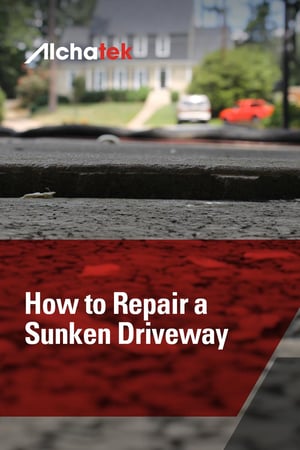
 Sunken concrete slabs in your driveway can be a frustrating and unsightly problem. Not only do they detract from your home's curb appeal, but they can also create safety hazards for vehicles and pedestrians. Fortunately, there are effective ways to repair sunken slabs and restore your driveway to its original smooth, level surface. It’s essential to understand how to repair a sunken driveway properly.
Sunken concrete slabs in your driveway can be a frustrating and unsightly problem. Not only do they detract from your home's curb appeal, but they can also create safety hazards for vehicles and pedestrians. Fortunately, there are effective ways to repair sunken slabs and restore your driveway to its original smooth, level surface. It’s essential to understand how to repair a sunken driveway properly.
Understanding the Problem
Sunken concrete slabs occur when the ground beneath the driveway settles or erodes over time. This can be due to a variety of factors, including:
- The weight of vehicles repeatedly driving over the same area
- Water seeping underneath and washing away the soil
- Poor soil compaction or preparation during the original installation
As the support below the concrete deteriorates, sections of the driveway begin to sink, dip, and crack. If left unaddressed, the problem will only worsen, leading to further damage and potential trip hazards.
Repair Options: Concrete Leveling vs. Replacement
When faced with sunken driveway slabs, homeowners have two main options: level the affected concrete or replace the entire driveway. The best approach depends on the extent and severity of the sinking, as well as budget and timeline considerations.
For isolated areas where the slabs are still mostly intact, concrete leveling using polyurethane foam injection can be an effective solution. This process involves pumping expanding polyurethane beneath the sunken sections to lift and stabilize them back to their original position. The foam fills any voids, solidifies the soil, and adheres to the underside of the concrete for support.
Polyurethane leveling offers several advantages vs. replacement, including:
- Minimal equipment needed, minimizing disruption to your property
- Fast curing time, allowing for a quick return to use
- Resistance to water and further erosion, helping to prevent future sinking
On the other hand, if the sinking is widespread and the concrete is severely cracked or deteriorated, a full driveway replacement may be necessary. This involves demolishing and removing the old slabs, preparing a new stable base, and pouring fresh concrete. Replacement is typically more expensive than polyurethane leveling and requires more extensive equipment and labor. The process also takes longer, which can be an inconvenience for homeowners.
Ultimately, the decision between polyurethane leveling and replacement depends on the specific condition of your driveway and your individual needs. It's important to consult with a professional contractor who can assess your situation and provide guidance on the most appropriate solution for your home.
Hiring a Professional Concrete Leveling Contractor
- It’s important to hire an experienced contractor who specializes in concrete repair. Look for a company with:
- Extensive experience using polyurethane injection for leveling
- Manufacturer-trained technicians who follow safety protocols
- Positive references and reviews from past customers
- The ability to provide before and after photos of successful projects
A reliable professional will have the expertise to assess your specific situation and recommend the best course of action for your driveway.
How to Repair a Sunken Driveway: Getting Started
If you're ready to tackle your sunken driveway slabs, Alchatek is here to help. As a leading manufacturer in the construction industry, Alchatek specializes in innovative solutions for concrete leveling and repair. Our expert team can provide guidance on your project and connect you with a qualified local contractor.
Fill out this form or call 404-618-0438 for a contractor referral today!


